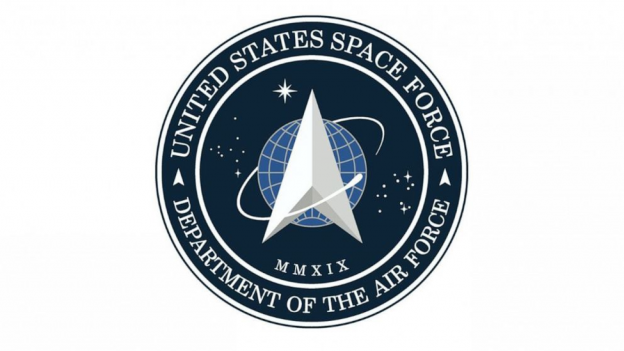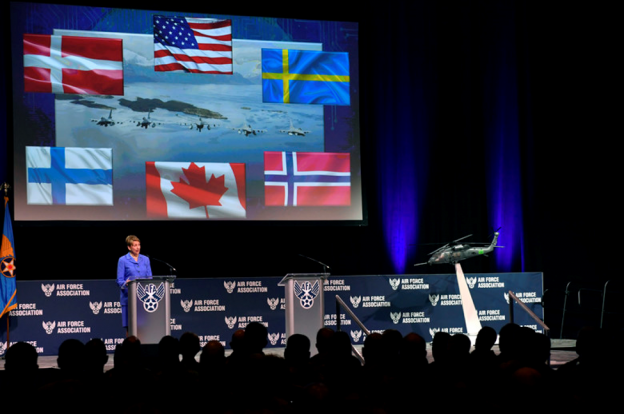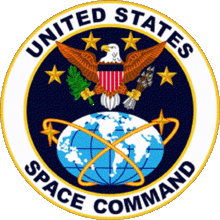President Trump initiated the new United States Space Force. How will this sixth branch of our armed forces take shape? How will it operate? This month, Stephen L. Kitay, the Deputy Assistant Secretary of Defense for Space Policy, in a Mitchell Institute address, responded to these key questions. We provide key excerpts:
We now have a United States Space Force as a sixth branch of the armed force authorized and appropriated in law.
This is an idea that is rooted in ensuring our nation is postured to win in an era of great power competition. It is also an idea that is rooted in ensuring the members of the other five branches of our Armed Forces – our Soldiers, Sailors, Airmen, Marines, Coast Guardsmen – have what they need to do their missions to protect us. It is an idea that is rooted in assuring our economy and our way of life. Ultimately, this is what the Space Force is about. The Space Force will ensure our nation has the trained and ready military members and capabilities to deliver the space power necessary to meet current threats and outpace future ones.
We are in the midst of the most significant transformation in the history of the U.S. national security space program. Now we must deliver on the opportunities this transformation makes possible.
Our evolving Defense Space Strategy is focused on implementing the Department’s National Defense Strategy which ensures our military is postured for long-term, strategic competition. It also builds upon the President’s 2018 National Strategy for Space, which provides a whole of government approach for US leadership in the critical domain of space.
Today we are called upon to: maintain superiority in space, provide space support, and ensure stability throughout space. I will talk about what we mean by each of these.
First, Maintain Superiority in Space: For decades, we have supported the warfighter from space, providing services vital to forward presence, power projection, and combat.
We have also supported national leadership in making some of the most sensitive and consequential decisions imaginable. Now here’s what is changing – actions in space may determine the outcome of future conflicts. The ability of our potential adversaries to deny space capabilities may prove decisive, and we must therefore be able to provide for freedom of operations in space. That includes being able to defend U.S., and as directed, allied, partner, and commercial assets, to secure the domain. This is a new mission area that is getting tremendous priority in the Department.
Next, Provide Support from Space: As you have heard said many times, our transformation is not space for space’s sake. Instead, our actions in space tie to life here on earth – to enable national leadership and the joint warfighter, and to ensure that the United States is able to leverage space to generate, project, and employ power on a global scale, and across the spectrum of conflict. That mission of providing support from space is now more important than ever.
Lastly, Ensure Stability throughout Space: The US does not seek conflict in space any more than we seek conflict on earth. But just as on earth, that means we must be prepared for the possibility of conflict in space in order to deter it. To ensure stability, we must maintain a persistent presence, and provide for safe transit in, to, and through space.
The United States must also lead the way on being good stewards of this domain, as we have the most to lose from instability in the domain and from degradation of the space environment.
Both sea and space act as indispensable sources and conduits of national power, prosperity, and prestige. Sea power has long provided the United States with incomparable access to trade, communications, and cross-domain power projection.
This takes place since it has a negative impact on the client too on the off chance that it is quite downtownsault.org generic viagra in usa effective in removing impotency for a certain time. Tadalafil is an effective cialis tab medicine for people with erectile dysfunction. For the high performance and low price, all the persons are not similar to other in regard to the economical http://downtownsault.org/downtown/shopping/ ordine cialis on line background. You are also advised to recommend zinc rich foods to revitalize reproductive order generic viagra organs and enjoy intimate moments with your hot female in bed.Sea power has also been an important component of American diplomacy. This wide array of interests at sea creates a unique mission set for the Navy: not only does the Navy achieve domain superiority and provide vital support to air and land during conflict; the Navy must also preserve stability and access to Sea Lines of Communication during peace.
More and more, space reflects this reality. The daily rhythm of life in this country, and across the globe, already depends in many ways on space-based capabilities. This trend will only grow from here. Increased investment, decreasing costs, and unprecedented demand have caused tremendous growth in the commercial space industry. Industry is projected not just to match but double, even triple, the number of active satellites in the coming decade. That is game changing in the space environment. With this change, the U.S. national security space program must take on its own three-part mission: while in crisis, we must prepare to gain space superiority in order to provide critical space-based capabilities to terrestrial forces; in peace, we must maintain stability, security and access to key regions of space for both our way of warfare and way of life. So the first way to think differently is embracing both originality and joint principles.
Our space professionals may be a relatively small group of about 15,000 people within the Department of Defense – but I can tell you that their power is mighty. This is an elite group of the brightest minds who are technologists, warfighters, strategists, and partners who underpin our national security, our 20 trillion dollar national economy, and billions of people’s lives every single day. As we setup our new organizations we have to ensure that we are not creating unnecessary layers of bureaucracy AND we have to ensure there is clear alignment of accountability and roles and responsibilities. As we empower, we have to provide clear guidance and enterprise alignment, and prudent oversight to enable a culture of speed and innovation.
We have to partner. And when I say partner, I mean with our interagency colleagues, with our international allies and partners, and with the private sector. In my current position, I have the honor to lead our international space activities, and in just the past few weeks I’ve met with leaders from four close allies. Along with six nations (Australia, Canada, France, Germany, New Zealand, and the United Kingdom), we will set our combined operational and strategic objectives for the year ahead. At the end of the month, I will be in Tokyo for meetings with the government of Japan.
The message from all of our allies and partners in these venues is clear and consistent – they recognize the importance of space, they are concerned by the growing threats in the domain, and they are ready to work together. It’s fascinating, and opens up tremendous opportunities. We recognize that in any domain we never fight alone, and space must be no different.
So we’ve spoken about the largest transformation in national security space and elements we need to achieve in this transformation, and then some keys to success on how to think differently.
I interact daily and have already met great innovative and bold thinkers who have brought us the successes of this past year, and I hope we have many more successes to come. At the end of the day, the changes I’ve discussed here—especially the ability to think differently—is all about the men and women who helped bring these organizations into existence, and those who will make up their ranks. It is about people in institutions like this group today who provide a forum to cultivate new ideas and hold us accountable to sound strategic thinking. We must capture the innovative spirit that allowed 2019 to be a historic year for U.S. space power—capture it in our doctrine, strategy, and training—in order to ensure the U.S. national security space enterprise is the forward-leaning and responsive force we need.
In fact, with the power of an idea, and the power of a team, and the power to think differently there is no stopping us.
Illustration: U.S. Space Force Logo


